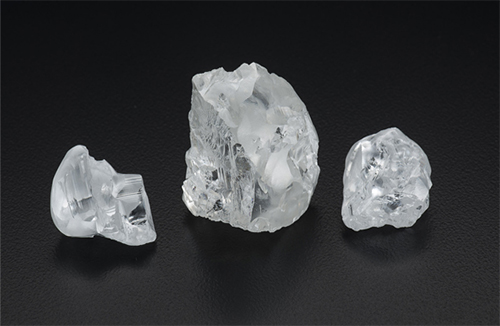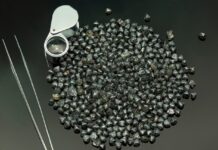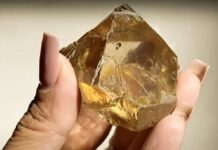A team of GIA researchers led by GIA Postdoctoral Research Fellow Evan Smith published an article recently in Science magazine titled ‘Large Gem Diamonds From Metallic Liquid in Earth’s Deep Mantle’, which postulates that “Large and exceptional gem diamonds like the famous Cullinan or Lesotho Promise tend to have a set of physical characteristics that distinguish them from other kinds of diamonds”.
These diamonds dubbed “CLIPPIR” diamonds most notably have a low nitrogen concentration, and, the researchers say, “they tell us something remarkable about the deep earth”.
“The new findings show that CLIPPIR diamonds may have grown from a metallic liquid in Earth’s deep mantle,” states the article. “This iron-nickel metal is created and stabilised by the high pressure minerals in the deep mantle. Although the amount of metal in these regions of the mantle is likely about 1% or less, it is expected to regulate and limit the availability of oxygen. The distribution and availability of oxygen is one of the key parameters governing the large-scale geologic evolution of the Earth.”
The researches say that their discovery is based on inclusions. Generally, CLIPPIR diamonds tend to have few inclusions, especially in their cut and polished state, but sometimes they have small metallic inclusions trapped within them. “The metallic inclusions coexist with traces of fluid methane and hydrogen,” the article says. “In addition to the metallic inclusions, some CLIPPIR diamonds contain mineral inclusions that constrain the depth of origin. These inclusions show the diamonds formed at extreme depths, likely within 360–750 km in the convecting mantle. This is much deeper than most other gem diamonds, which form in the lower part of continental tectonic plates at depths of 150–200 km. This new explanation for CLIPPIR diamonds resolves one of the major enigmas in the study of diamond formation—how the world’s very best and biggest diamonds formed.”
The metallic inclusions are a solidified mixture of iron, nickel, carbon, and sulfur, also containing traces of fluid methane and hydrogen in the thin tiny space between the metallic phases and the encasing diamond,, the article states. “Originally, this mix was a larger mass of molten metallic liquid in Earth’s deep mantle, from which the pure carbon crystallized to form diamonds,” it adds. “Small droplets of this metallic liquid were occasionally trapped within the diamonds as they grew.”
The GIA researchers aver that earlier experiments and theory had predicted that “parts of the deep mantle below about 250 km depth contain small amounts of metallic iron and have limited available oxygen”.
“Now, the metallic inclusions and their surrounding methane and hydrogen jackets in CLIPPIR diamonds provide consistent, systematic physical evidence to support this prediction,” the scientists conclude. “Though the extent of metal distribution is uncertain, this is a key observation for our understanding of the Earth and has broad implications for the behaviour of the deep Earth, including the recycling of surface rocks into the convecting mantle, and the deep storage and cycling of carbon and hydrogen in the mantle through geologic time.”
Pic Cap: Rough CLIPPIR diamonds, from the Letseng mine, Lesotho, exemplifying large size (14 to 91 carats here), irregular shape and resorbed surfaces. Photo by Robert Weldon/GIA; courtesy of Gem Diamonds Ltd.
News Source : gjepc.org
Disclaimer: This information has been collected through secondary research and TJM Media Pvt Ltd. is not responsible for any errors in the same.




























